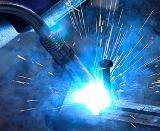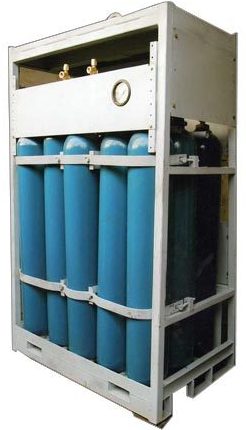Shielding gases for welding
 The main purpose of shielding gases during welding is to enclose the welding pool in a protective shell to protect it from harmful external influences of atmospheric air. Shielding welding gases are active, inert or a mixture of active and inert (inert with inert) gases.
The main purpose of shielding gases during welding is to enclose the welding pool in a protective shell to protect it from harmful external influences of atmospheric air. Shielding welding gases are active, inert or a mixture of active and inert (inert with inert) gases.
Inert gases do not react with metals, nor do they dissolve in them. When welding active metals (titanium, aluminum, etc.) in inert gases, helium, argon, argon-gel mixtures, nitrogen (for copper welding) are used. The use of inert gases when welding chromium-nickel steels allows obtaining a high-quality weld.
Argon - colorless, non-toxic, explosion-proof gas, odorless and tasteless. Argon is one and a half times heavier than air, so welding with this gas must be done in a ventilated area to avoid the risk of suffocation to workers.
In terms of purity (absence of impurities), argon is produced of the highest class, first and second, transported in a gaseous or liquid state in cylinders with a volume of forty liters, under a pressure of 15 MPa.Cylinders must be painted gray with a green stripe and have a green label. The consumption of argon depends on the diameter of the electrode and is in the range of 100 … 500 liters per hour.
Helium in its chemically pure form is rarely used due to its high cost. It is most often used as an additive to argon and is used for welding chemically pure or active metals, aluminum or magnesium alloys to provide a large penetration depth. Helium is lighter than air, odorless, colorless, tasteless, non-toxic.
Helium is produced in three types (A, B, C), transportation is carried out in brown bottles with white letters. Helium consumption is 200 ... 900 liters per hour; because it evaporates easily, the gas consumption should be increased to ensure good protection of the metallurgical welding process.
Nitrogen is inert when welding, cutting and laminating copper, it is harmful for welding steel. Nitrogen is produced in four grades: superior, first, second and third. The gas is also colorless, odorless, tasteless, non-toxic and non-explosive. It is transported in a gaseous state in cylinders.
Of the active gases, the most commonly used carbon dioxide and its mixture with argon... Carbon dioxide has a sour smell, is non-toxic, colorless and heavier than air. Its industrial purity depends on the presence of water vapor (extra and first class). It is transported in liquid form in cylinders painted with black paint with yellow lettering. Before use, the bottles are placed with the open valve down to remove water vapor.
Carbon dioxide decomposes into oxygen and carbon monoxide in the weld pool. Oxygen oxidizes the molten metal and leads to porosity in the weld.To reduce this negative phenomenon, electrodes with a high content of manganese and silicon are used, which act as deoxidizers.
Gas mixtures often have higher technological parameters than chemically pure gases. V production of welding works the greatest application has been found for mixtures of carbon dioxide with oxygen, helium with argon, argon with carbon dioxide. The first mixture allows the transfer of fine droplets of liquid metal, forms a high-quality seam and reduces spatter losses.
A mixture of helium with argon increases productivity when welding aluminum, increases penetration depth and improves welding quality. A mixture of carbon dioxide and argon (respectively 12% and 88%) stabilizes the electric arc, reduces spatter and surface tension of the electrode metal, improving the welding structure.
The use of shielding gases in welding improves the quality of the joints, allows changing a wide range of welding modes and increases the range of metals to be welded.

